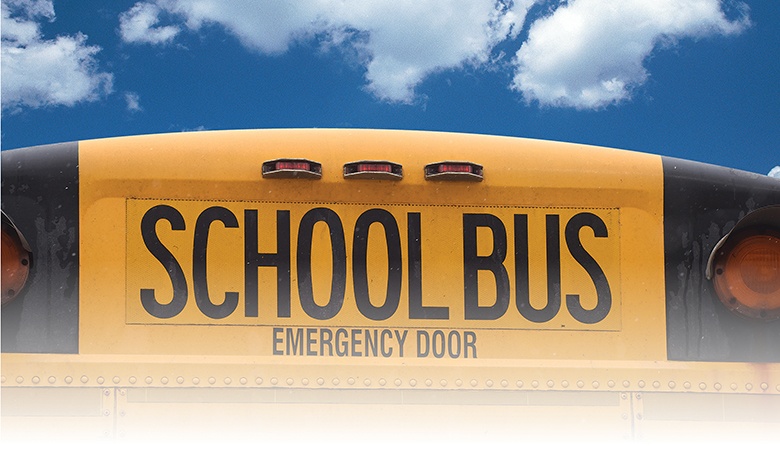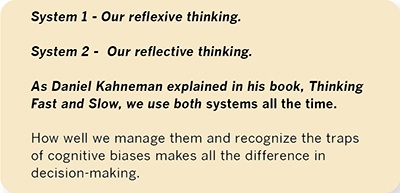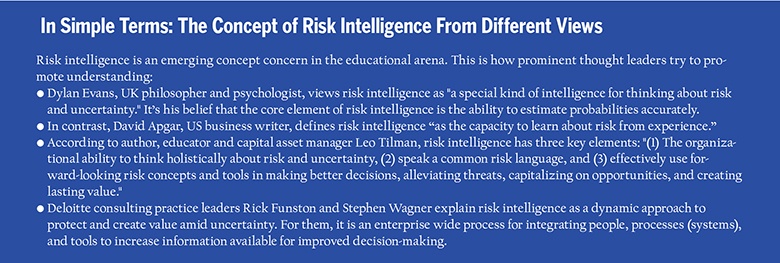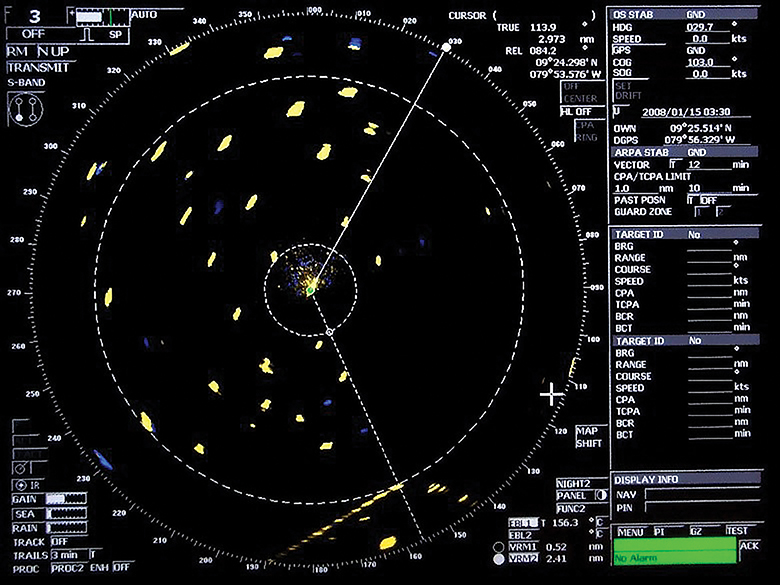
Enduring capacity and improvements in readiness, reliability, and resilience are needed to increase stakeholder confidence in public education
Movies tend to bring us closer together in shared experiences. Sometimes the lessons imparted through the cinematic arts are obvious. All too often the lessons are obscured or lost in the drama and special effects.
What would your takeaways be if you experienced the following four movies with the mindset of a risk intelligent school administrator?
• Moneyball • The Blindside • Hidden Figures • Ford v. Ferrari
At first, your focus might be on the uphill battles faced by the characters in these movies and the thrill of winning. Here’s why a closer look is warranted:
From Moneyball, you can gain a greater appreciation for an elegant solution – the idea that a better approach is one that accomplishes the desired outcome with a different process that uses fewer resources. The general manager of the Oakland Athletics demonstrated this repeatedly in his methods of selecting players with discipline at the plate.
The Blindside can reinforce the notion of being a “left tackle” for your district – in this respect, you serve in the crucial of protecting the highest-level signal caller (s) from making decision-making errors.
In addition to reminding you about the challenges of computing in the early days of NASA, Hidden Figures can help you gain a holistic perspective on advancing in spite of adversity. The movie underscores the value of a strong supporting cast in order to deal with distractions, pull together all the facts, and deliver results right on time.
Even though Ford v. Ferrari is a great story about high performance and endurance, it also highlights the importance of good braking, steering, and well-planned time-outs. Embedded within Ford v. Ferrari is the story of Shelby Motors that proved to be the decisive additive ingredient in winning the 1964 LeMans auto race. The movie dramatically illustrates the importance of “thinking fast and slow” – a reminder that every decision-maker must understand System 1 and System 2 thinking.
 Together, these four movies underscore why the “people side of risk” matters as much as a “probabilities side of risk” to the advancement of individual and district-wide risk intelligence mindset.
Together, these four movies underscore why the “people side of risk” matters as much as a “probabilities side of risk” to the advancement of individual and district-wide risk intelligence mindset.
Risk Intelligence is sometimes boiled down to the simple notion of “looking both ways” or to use the baseball analogy, “being a switch hitter.” In the pages that follow, we explore how an entire school district can turn on and power up the capacity, skills, and support to become highly risk intelligent.
Open, dynamic, distributed school activities are difficult to improve
The complexity of managing K12 educational settings is evident to most people. Every size district faces challenges from waves of growth and change in regulations, velocity in emerging issues, disruptive innovations, and unprecedented digital and A.I. challenges. Keeping every change in strategy, policy, operations, and processes aligned is a significant challenge for school boards and management professionals throughout all levels of the district.
Even the seemingly simple task of transporting students to and from school now takes constant re-adjustment and agility. Making all the right connections between schools and outside events is a sophisticated logistics activity made even more demanding by a declining pool of eligible drivers and almost no incentive for the upwardly mobile to participate in safely delivering the nation’s “most precious cargo.”
A lot of energy can be expended in creating an office of risk management administration within a district in order to perform routines related to insurance procurement, asset inventory, and claims management. This evolution typically occurs when there are too many tasks for a single administrator in HR or Finance to handle efficiently. The reality of the modern school enterprise environment combined with the interconnected effects of uncertainty on objectives requires that top administrators join organizational thought leaders in their approach to risk intelligence.
Coming out of 2020 and 2021 and a quick take on risk intelligence
While a few outright failures have surfaced from the aftermath of two years of pandemic, the majority of districts managed to keep things on a fairly even keel. Diving deeper, one finds within districts many individual schools struggling to overcome barriers to high achievement and administrators weighed down, carrying human capital and deferred improvement burdens never experienced before. Exceptional districts navigated the Covid-19 pandemic with agility and continue to thrive.
A rapid exodus of teachers and administrators is perpetuating the worst impact of the pandemic. What started with a disease crisis has mushroomed into a mental health meltdown for a large number of students, employees, and the broader citizenry. Psychological – emotional safety is under siege by the forces of super-heated political rhetoric and the elusive nemesis generously referred to as “social media.” School Safety initiatives are often attempted in isolation from the outside community. Districts face an environment of volatility, uncertainty, complexity, and ambiguity, commonly known as V.U.C.A.
Success going forward requires incorporating time-tested organizational development lessons from Deming on productivity, Drucker on effectiveness, and Senge on learning organizations, together with contributors in the realm of prevention science. Ultimately, administrators must find new ways to keep public outrage from being instantly turned into hardening incivility. Today’s school leaders need the traits of calm activists, steady statesmen, and generous sherpas to move things forward. A few Gandhis, Mandelas, Mother Teresas, and Nightingales to support them would also help

Emergence of 10 skills of school risk intelligence
Some contributors to our current understanding of risk intelligence were originally convinced that the underlying concepts and skills could only be learned through experience. This helps explain the scarcity of reference books on the subject and why the development of a professional education curriculum has been slow in coming. One of the first complete skillsets for risk intelligence was devised sometime between 2005-2010 by Frederick Funston and Stephen Wagner, veteran C-suite consultants with Deloitte, LLP.
The first-ever framework of risk intelligence skills for a school board and entire district workforce was introduced in 2017. It closely follows the example of Funston and Wagner. The ten skills are arranged in a manner intended to make them easy to learn and apply to everyday decisions at all levels in the K12 arena. The developer envisioned students going through a formal process of learning, wherein they acquire the skills in a particular order, visualized as a “home plate” and a “radar screen.” Additionally, students would learn how to use another visualization technique to “make a diamond” as a means of recalling and connecting all the skills.
The paragraphs that follow briefly describe each of the first five skills.
1. Define Reality …The skill of defining reality is the necessary starting point in considering value and risks and ways of addressing them. Leaders grasp the changing conditions, the state of operating systems, and the condition of their relationships with all stakeholders. They check assumptions about their environment and business model and examine the contrasting alternatives to better foresee the characteristics of major shifts and assess whether they are beneficial or adverse to the district.
2. Fine Tune Systems…The skill of tuning systems is concerned with making critical adjustments and managing key connections. Leaders grasp the complexity and interconnectedness of the global and local business environment and see how one set of events can affect another. They use corresponding tools to understand critical dependencies, how long the organization can go without them, and how it can improve its chances of thriving in the face of profound disruption or opportunity for the district.
3. Boost Confidence…The skill of boosting confidence focuses on creating a margin of safety, avoiding over leverage and low performance to give the organization room for error. Leaders use approaches that enhance current abilities, while also knowing the limitations of new people, processes, and equipment. They galvanize support for initiatives and programs that foster better decisions and improved practices, while installing evidence-based approaches that generate enthusiasm for the vision, mission, and goals of the district.
4. Balance Exposures…The skill of balancing exposures entails distinguishing between risks that are acceptable, better, and best for current organizational capabilities. Leaders define the types of risk and tolerance for various outcomes according to the type of exposure under consideration. They take enough of the right risks, create sustainable advantage with calculated risk sharing, understanding that all risks cannot be eliminated and not all decisions produce optimal results for the district.
5. Perpetuate Ownership…The skill of perpetuating ownership is about producing sustained
commitment to operational discipline and preservation of institutional knowledge and responsibility. Leaders understand the positive aspects of organizational culture and employ practices that “do more of what works.” They foster an ownership mindset so that every individual accepts personal responsibility and cooperates for long-term benefit, with high standards of performance and integrity over the course of challenges as well as extraordinary success for the district.
And the last five skills create competency for moving forward in continuously changing conditions. Together, they may bring to mind the image of a commercial ship’s radar screen or a similar one used by air traffic controllers. For each of these general skills, there will almost always be specific refinements for different operating spaces, functional responsibilities, specific disciplines, and the district as a whole. The paragraphs that follow briefly describe these skills:
1. Set Perimeter… The skill of setting perimeters entails judging the relevance of events that shape the environment, weighing news and divergent insights, and imagining the vulnerabilities of the district’s physical and digital secure zone. It calls for establishing the time horizons of possible breakdowns, program run times, shelf-life expirations, system lifespans, and possible intrusions. Rapid adoption of cloud and mobile data adds to the challenge of security technology decisions. Accurate conception of secondary operating perimeters is increasingly necessary.

2. Scrub Data… The skill of scrubbing data is foremost about verifying sources and corroborating information. The extent of this skill is not confined to simply removing errors in computer/digital system data files. More broadly it entails checking assumptions and taking measures to address the whole range of cognitive biases. Leaders must ensure that assessments of threats and opportunities are accurate and avoid mindset traps, blindspots, fallacies, and group think. Information management is vital. As people and systems change, information volume and recall changes make it ever more important to identify patterns, inaccuracies, and cascading errors.
3. Place Sensors… The skill of placing sensors is about “risk sensing,” signal detection, and anticipating causes of failure. It entails appointment of trusty sentinels, defining their roles and responsibilities, and optimizing the types and locations of notifications and alarms. Once alerted to a possible issue, the “risk owner” must activate the appropriate response to contain the impact. Sensor placing skill includes use of relevant news and subject matter sources, as well as routine maintenance of enterprise level alerts and the fundamental task of battery checks. Prudent sensor placing routinely tests sentinel awareness and sensor placement to ensure the human-technology system is intact and fully connected.
4. Clock Movements…The skill of clocking movements entails factoring in the velocity and momentum of change from on-coming events and duration of lingering effects of recent events. It is recognition of time horizons, milestones, planning cycles, and setting the length of time for results or a decision to exit, sunset or discontinue a program or ownership of a physical asset, investment, or intangible. Applying the clock is fundamentally about adequate preparation and attention to the direction, speed and pace of change in the operating environment.
5. Monitor Disruptors…The skill of monitoring disruptors is about maintaining constant vigilance and grasping the full picture in every situation. It entails unscrambling mixed messages and keeping sight of objectives when the prevailing tendency may lean toward playing whack-a-mole. It is the energy and enthusiasm to stay on point at all times, to check for nearsightedness, maintain peripheral vision, and to sort distracting and meaningless minutia from nuggets of priceless insight.
Lee Gaby is Board chair and co-founder of the Education Risk Intelligence Center PBC. The views expressed are those of the author.


